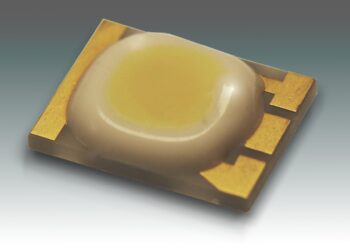The Department of Defense today announced a significant boost to America’s microelectronics manufacturing capacity and workforce development infrastructure with $269 million in awards for 33 new technical projects under the Microelectronics Commons (ME Commons) initiative. This investment is funded by the CHIPS and Science Act, a key part of the Biden-Harris Administration’s Investing in America Agenda, aimed at strengthening the nation’s semiconductor manufacturing capabilities and reducing dependency on foreign sources of microelectronics.
“Under the leadership of President Biden and Vice President Harris, we’re creating a new chapter in semiconductor research and development here in America,” said Arati Prabhakar, the President’s Chief Advisor for Science and Technology and Director of the White House Office of Science and Technology Policy. “These CHIPS and Science Act investments through the Microelectronics Commons will advance innovation for components that enable the most sophisticated defense systems, strengthening our national security. Today’s awards are the next step to ensure we win the future.”
The ME Commons, established in 2023, comprises eight regional hubs set to receive $2 billion in funding from FY23 to FY27. The initiative focuses on accelerating domestic microelectronics hardware prototyping and workforce development, providing American workers with advanced skills for securing good-paying careers. The ME Commons program is a key research and development initiative focused on advancing the future of American microelectronics technology.
“Microelectronics are critical to our goals of having a more reliable microelectronics supply and delivering next-generation capabilities for our troops,” said Dr. Devanand Shenoy, executive director of the Microelectronics Commons and principal director for microelectronics in the Office of the Under Secretary of Defense for Research and Engineering. “These awards will also upskill America’s workforce, thus helping keep America both secure and prosperous.”
The $269 million in awards are spread across six technical areas: four projects in quantum, totaling $32 million; four in secure edge computing, totaling $25 million; five in 5G/6G, totaling $42 million; six in electromagnetic warfare, totaling $51 million; seven in commercial leap-ahead, totaling $38 million; seven in artificial intelligence, totaling $42 million; and a Cross-Hub Enablement Solution (CHES) award, totaling $39 million.
As part of the announcement the Department of Defense, and senior officials from the White House will be traveling to three of the eight hubs to discuss the Commons’ progress to date, to highlight specific award recipients, and to discuss the research being funded in greater detail. On Tuesday, September 17 the roadshow will begin at the SWAP Hub in Phoenix, Arizona featuring Deputy Assistant to the President and Coordinator for Technology & National Security Tarun Chhabra; the roadshow will then progress to the NEMC Hub in Boston, Massachusetts on Wednesday, September 18 featuring Senior Advisor to the President for Energy and Investment Amos Hochstein; the roadshow will conclude at the CLAWS Hub in Raleigh, North Carolina on Thursday, September 19 featuring Director of the White House Office of Science and Technology Policy Arati Prabhakar.
Last year, the Department of Defense announced and awarded just under $240 million to launch the eight Hubs. Since then, the Hubs have grown their membership from around 400 initial members to over 1,200 organizations today consisting of innovators, transition owners, academic leaders, defense industrial base (DIB) partners, government program managers, and prototyping and manufacturing facilities, to enable lab-to-fab prototyping, including:
- Forging strategic partnerships between member organizations that lead to enhanced cooperation and sharing of resources and research;
- Lowering barriers to entry to conduct research by developing neutral trusted environments;
- Modernizing existing research facilities through investments in state-of-the-art manufacturing and test equipment;
- Offering flexibility and faster learning cycles compared to traditionally rigid process development driven by commercial foundries when developing prototypes ready for manufacturing.
Along with transitioning technology across the “valley of death” the Commons is also transitioning the workforce. Each Hub is implementing a workforce development plan, as part of its model, that is tailored to the needs of that Hub and regional ecosystem. These models are designed to identify the most pressing workforce development needs specific to each Hub and to provide a flexible approach to fill those gaps.
To close these gaps, Hubs have workforce development (WFD) initiatives that expand microelectronics education (and related disciplines), targeting smaller and rural schools, community colleges, Historically Black Colleges and Universities (HBCUs), and Minority-Serving Institutions (MSI), which are an underutilized resource for the semiconductor industry. Defense Industrial Base companies are key partners within these Commons WFD initiatives to train and recruit new talent.
Other important areas to address within the microelectronics workforce are reskilling and upskilling veterans, and existing professionals, and providing opportunities for entry-level job seekers. Targeted microelectronics certificate programs are providing specialized education and hands-on, project-driven approaches that ensure graduates are ready to thrive in the semiconductor workforce.
The project funding is being disbursed among 28 states and Washington, D.C.
(Source: US Department of Defense)







